TULSI FLORA HONEY COLLECTION PROCESS
tulsi flora honey collection process involves specific steps to ensure its purity and quality. Here’s a typical process:
Location Selection: Beekeepers choose locations with abundant tulsi (Forest basil) plants. These locations should be free from pesticides and other contaminants that could affect the honey’s quality.
Placement of Beehives: Beehives are strategically placed near fields or areas where tulsi plants are abundant. The proximity ensures that bees have easy access to the nectar from tulsi flowers.
Honeybee Activity: Honeybees visit the tulsi flowers to collect nectar. They suck the nectar using their proboscis and store it in their honey stomach.
Return to Hive: Once the honeybees have gathered enough nectar, they return to their hive. Inside the hive, the bees pass the collected nectar to other worker bees through regurgitation. This process breaks down the complex sugars in the nectar into simpler sugars.
Honey Production: The worker bees then deposit the processed nectar into honeycomb cells within the hive. They fan their wings over the cells to facilitate evaporation, reducing the water content of the nectar and transforming it into honey.
Ripening and Sealing: As the water content decreases and the honey matures, the bees seal the honeycomb cells with beeswax to preserve the honey.
Harvesting: Beekeepers monitor the honeycomb frames to determine when the honey is ready for harvesting. Once the honeycomb is capped and fully ripened, beekeepers carefully remove the frames from the hive.
Extraction: The honey is extracted from the honeycomb frames using various methods such as centrifugal force or honeycomb crushing. Care is taken to avoid heating the honey excessively to preserve its natural properties.
Straining: The extracted honey may be strained to remove any impurities or solid particles, ensuring a smooth texture.
Quality Control: Tulsi Flora honey undergoes quality control checks to ensure it meets safety and quality standards. This may include testing for purity, moisture content, and absence of contaminants.
Packaging: The strained honey is then packaged into jars or bottles. For tulsi flora honey, the honey may be infused with tulsi leaves during packaging to impart its flavor and potential health benefits.
Storage: The packaged tulsi flora honey is stored in a cool, dry place away from direct sunlight to maintain its freshness and quality until it’s ready for sale.

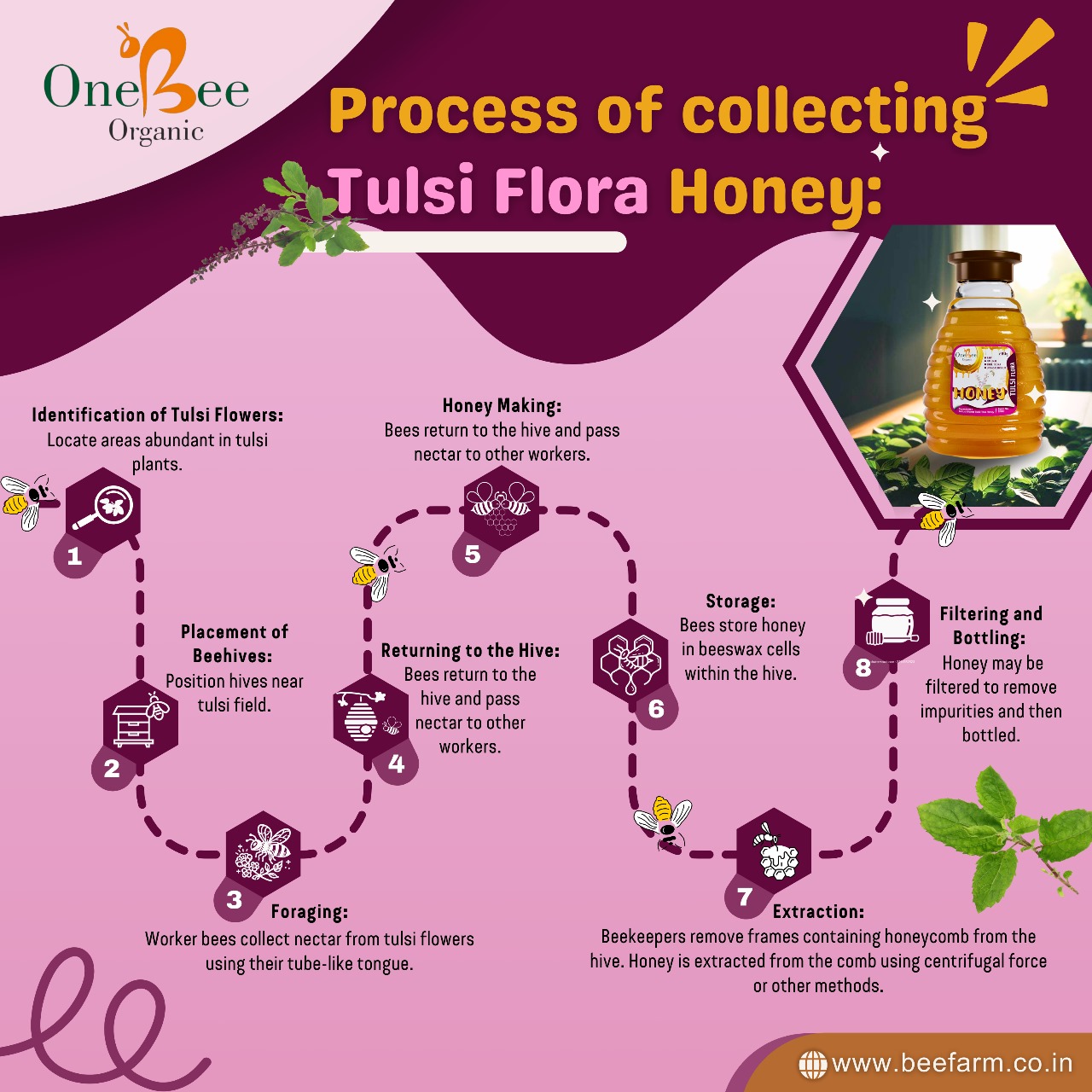
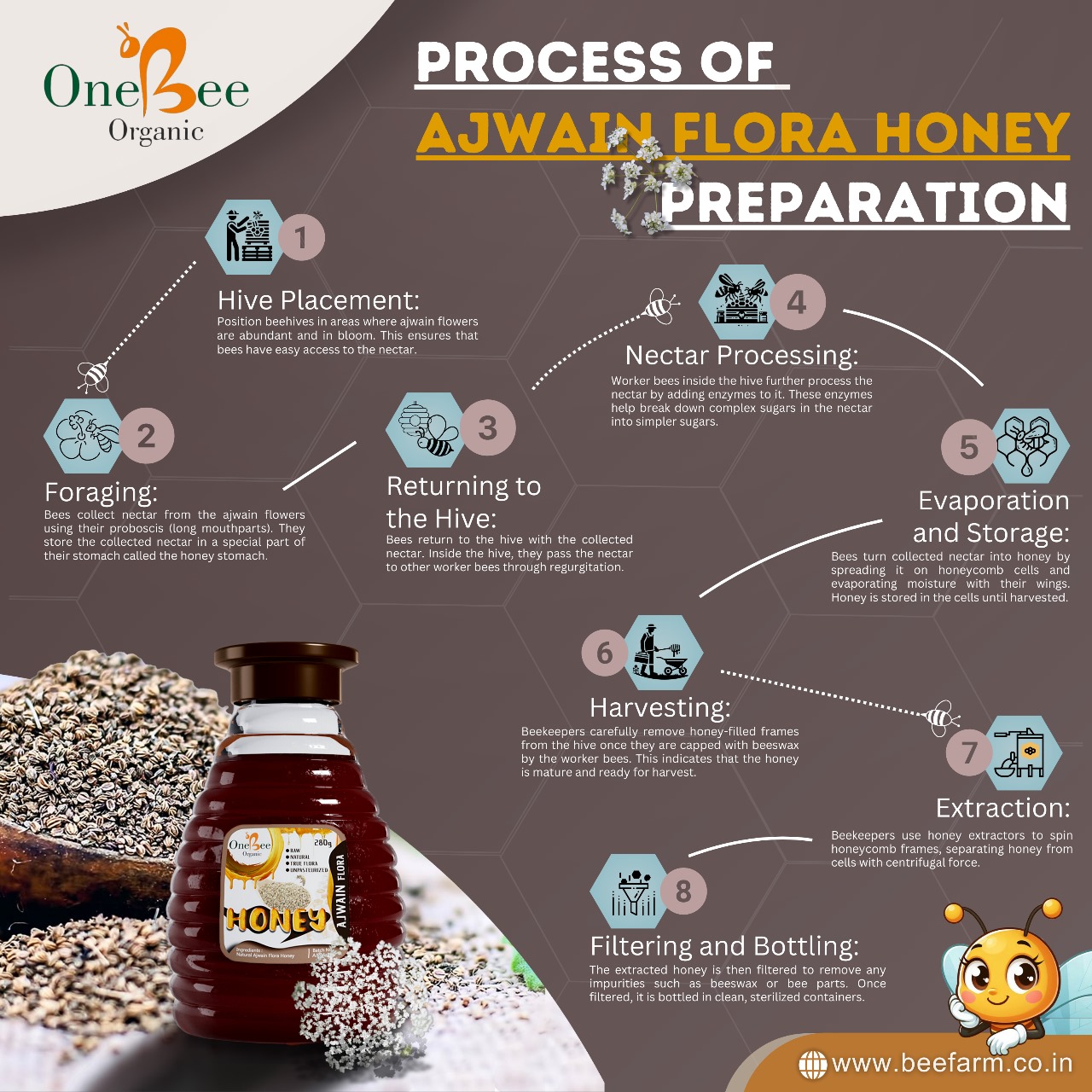
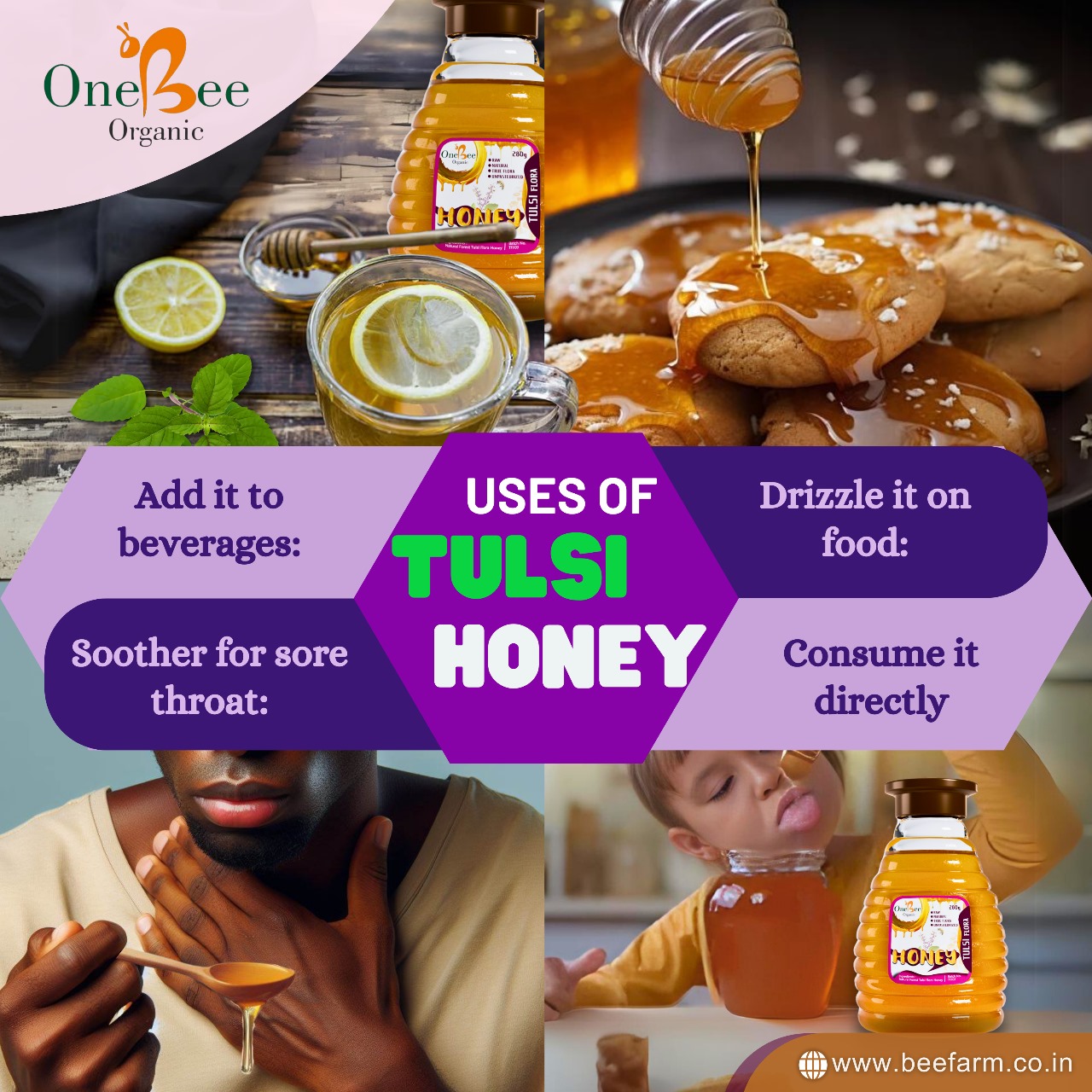
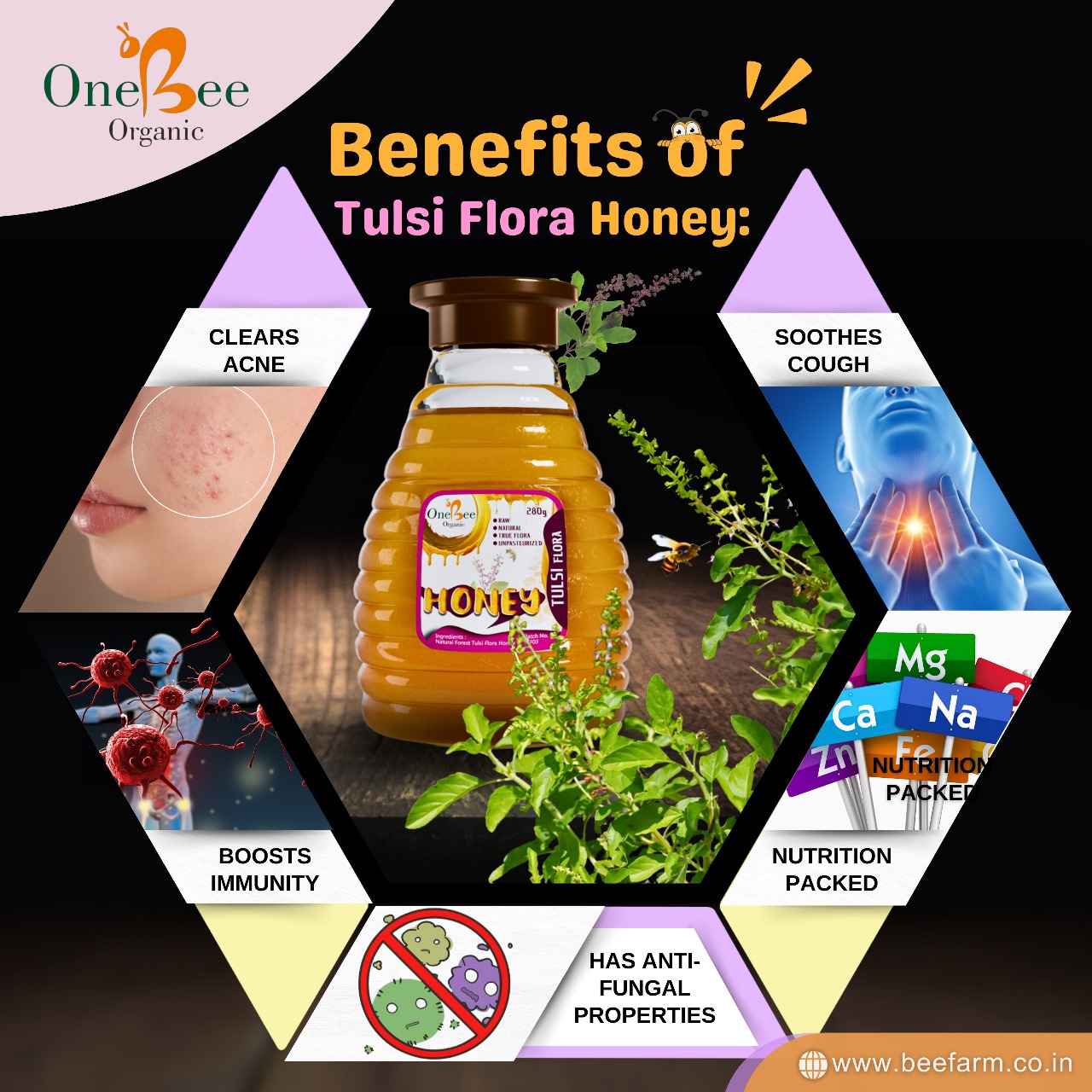
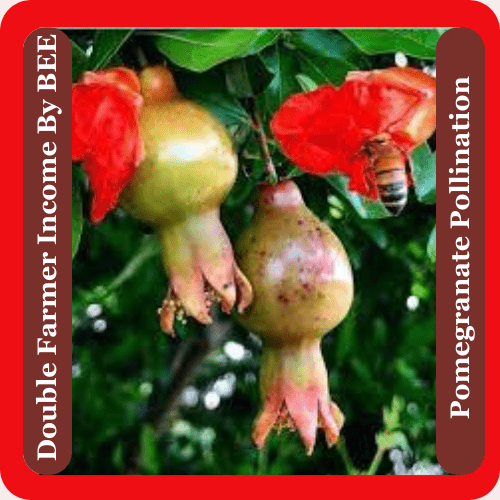
Leave A Comment